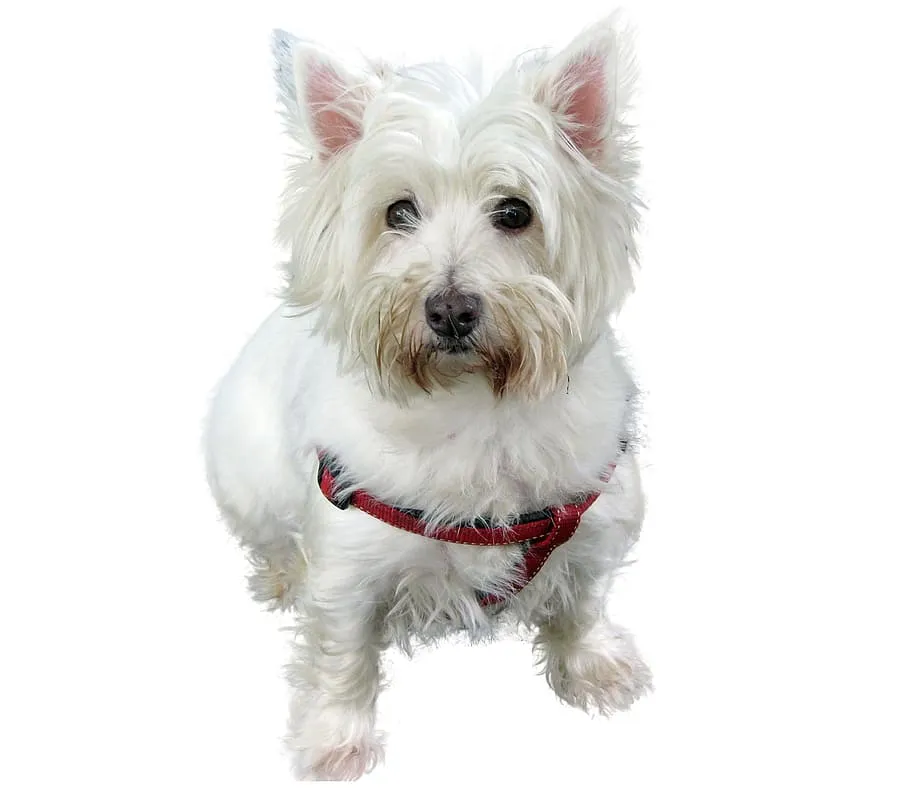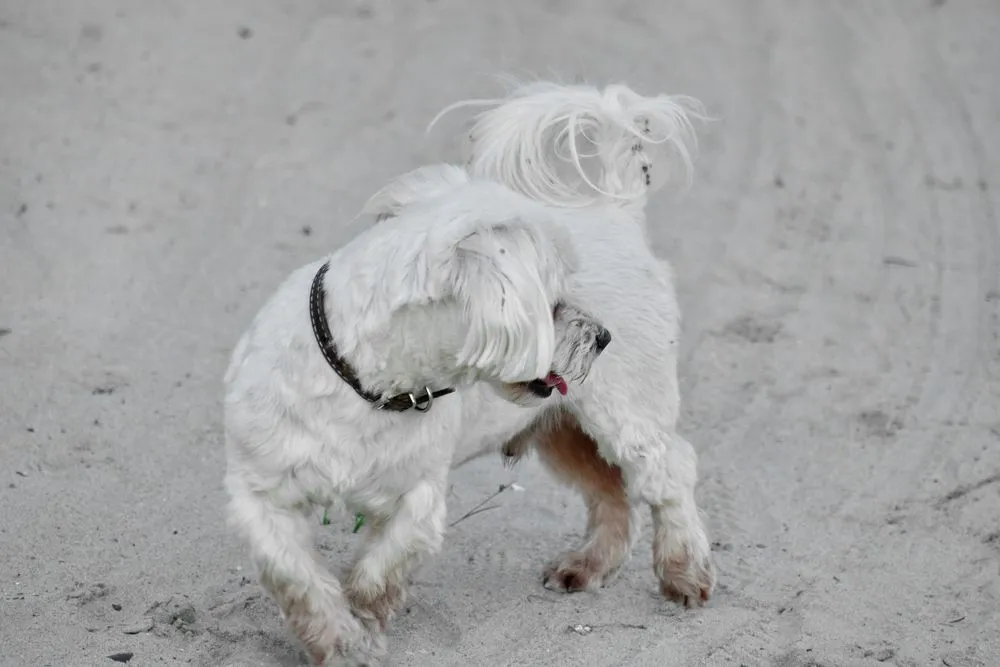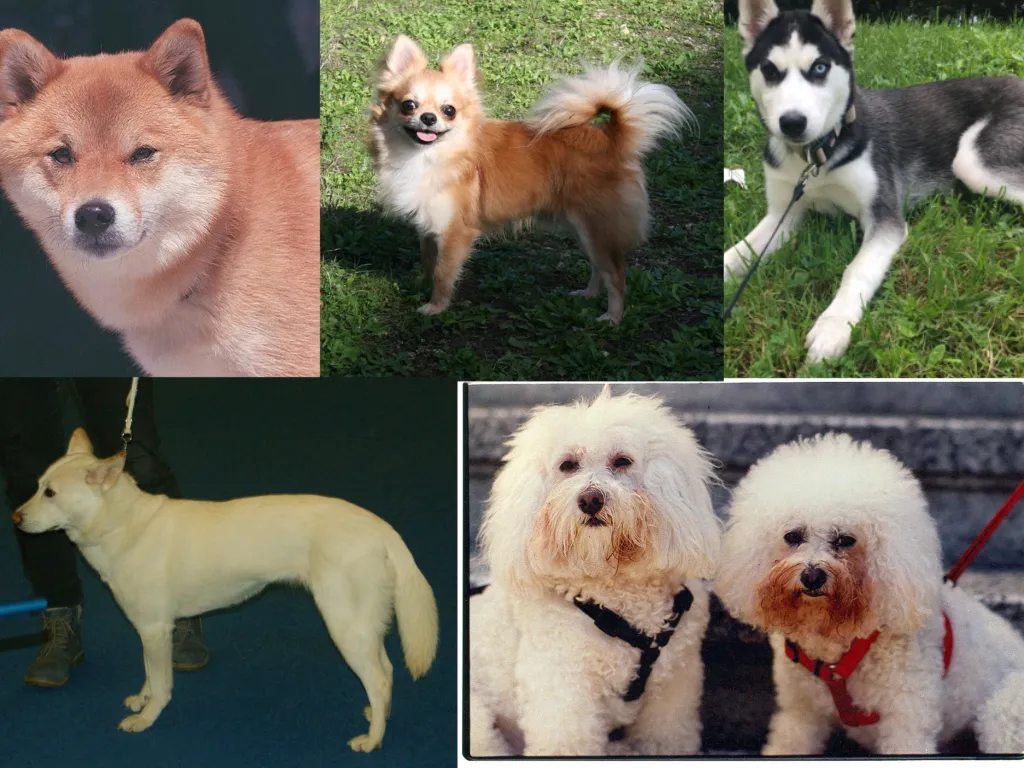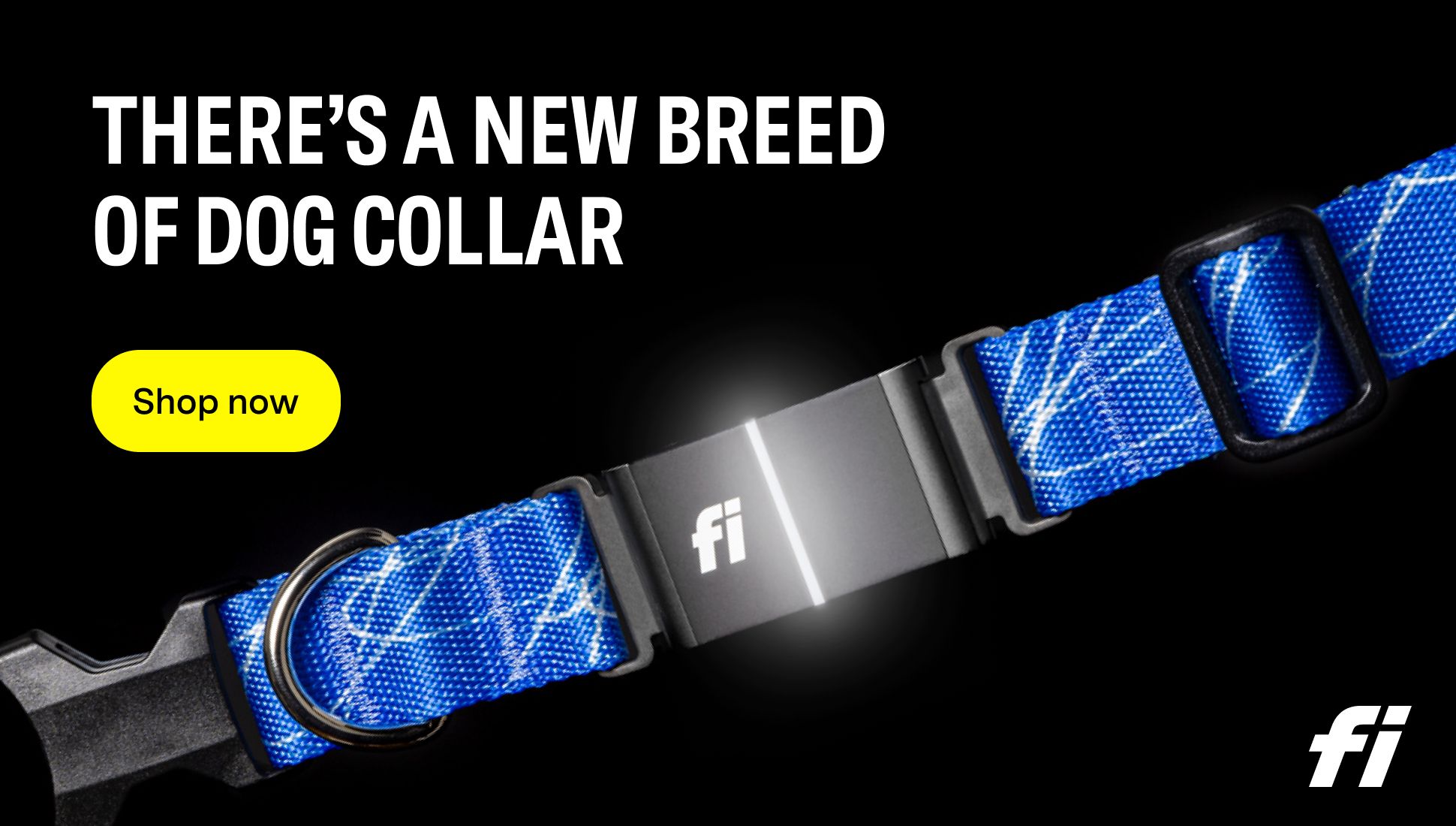When it comes to choosing a collar color for your white dog, there are a few important factors to consider. The collar color you choose can have both practical and aesthetic implications for your furry friend. Here are some key considerations to keep in mind when selecting a collar color:
- Contrast with the Coat Color: Opt for a collar color that provides a noticeable contrast against your white dog's coat. This will make it easier to spot your dog from a distance and enhance their visibility.
- Personal Preference: Take your personal preferences into account when choosing a collar color. Consider colors that you find visually appealing and that align with your dog's personality and style.
- Visibility and Safety: Visibility and safety should be a top priority when selecting a collar color. Choose bright and vibrant colors that make your dog easily visible, especially during low-light conditions or when they are outdoors.
Now, let's explore some popular collar colors that work well with white dogs:
- Blue: A classic color that complements a white coat, blue collars can add a touch of elegance and sophistication.
- Red: Red collars can create a striking contrast against white fur, making your dog stand out while adding a bold and vibrant look.
- Black: Black collars offer a sleek and timeless appearance, providing a clean and sophisticated look against the white fur.
- Pastel Colors: Soft pastel colors, such as pink, lavender, or mint green, can add a touch of gentleness and charm to your dog's overall appearance.
- Patterns and Prints: Consider collars with patterns or prints, such as polka dots or stripes, to add some fun and personality to your white dog's look.
Here are some tips to help you choose the right collar color for your white dog:
- Consider your dog's personality and temperament when selecting a collar color. Some dogs may prefer calming colors, while others may suit vibrant and bold shades.
- Take your dog's age into account. Puppies may look adorable with bright and playful colors, while older dogs may suit more sophisticated or subtle tones.
- Consider the season and the environment in which your dog will spend most of their time. Opt for reflective collars or bright colors during darker months or for night-time walks.
- Don't be afraid to experiment with different collar colors to find the perfect match for your white dog's unique style and appearance.
By considering these factors and exploring popular collar colors, you can choose the right collar color that not only complements your white dog's coat but also reflects their personality and keeps them safe and visible.
Considerations for Choosing Collar Colors
When it comes to choosing the perfect collar color for your white dog, there are a few important factors to consider. In this section, we'll explore the considerations that play a significant role in determining the ideal collar color. From contrasting with the coat color to personal preferences and even ensuring visibility and safety, we'll dive into each of these aspects to help you make an informed decision for your furry companion. So, let's delve into the world of collar color considerations for white dogs!
Contrast with the Coat Color
When selecting a collar color for a white dog, one crucial consideration is the contrast with the coat color. It is important for the collar color to stand out against the white fur in order to ensure easy visibility. This not only aids in quickly locating the dog but also serves as a safety measure, particularly during walks or outdoor activities.
To showcase the contrast with the coat color, let's refer to the following table:
| Collar Color | Contrast with White Fur |
|---|---|
| Blue | High contrast |
| Red | High contrast |
| Black | High contrast |
| Pastel Colors | Low contrast |
| Patterns and Prints | Varying contrast |
As demonstrated in the table, collar colors like blue, red, and black offer a high contrast with the white fur, making them easily visible. Conversely, pastel colors may not provide sufficient contrast, while patterns and prints may have varying levels of contrast depending on their specific designs.
Over time, the selection of collar colors for white dogs has evolved. Initially, people commonly chose black or dark-colored collars for visibility purposes. As pet fashion gained popularity, a wider variety of colors and designs became available. Today, pet owners have the opportunity to choose from a range of colors and patterns, ensuring that both visibility and style are taken into account.
When choosing a collar color for a white dog, it is crucial to opt for colors that offer a high contrast with the coat color. This guarantees better visibility and safety for the dog.
Personal Preference
When selecting a collar color for a white dog, personal preference plays a significant role. The color you choose should mirror your own taste and style, as well as your furry friend's personality.
To assist you in making an informed choice, here is a table that illustrates different collar colors and their corresponding characteristics:
| Collar Color | Characteristics |
|---|---|
| Blue | Calming and peaceful |
| Red | Energetic and bold |
| Black | Classic and sophisticated |
| Pastel Colors | Soft and gentle |
| Patterns and Prints | Fun and trendy |
Personal preference can differ from person to person, so it's vital to select a collar color that resonates with you. If you prefer a calming and peaceful vibe, a blue collar might be the perfect choice. For those seeking something vibrant and energetic, a red collar will make a statement. Black collars provide a timeless and elegant appearance, appropriate for any occasion.
If you prefer a softer touch, pastel-colored collars can add a hint of gentleness to your dog's look. On the other hand, patterns and prints can introduce a playful and trendy element to your dog's collar.
Remember, your dog's collar is a reflection of their personality and your personal style. Take into consideration the colors that make you and your pup feel joyful and self-assured when making your decision.

Visibility and Safety
Visibility and safety are crucial factors to consider when choosing a collar color for a white dog. It is important to choose collar colors that are bright and easily visible, such as neon yellow, neon orange, or fluorescent green. These bright colors will stand out against the white fur and make it easier to see your dog, especially in low light conditions.
In addition to bright colors, reflective materials should also be taken into consideration. Collars with reflective strips or made from reflective materials can enhance your dog's visibility at night or in dimly lit areas. These collars reflect light from passing cars or streetlights, making your dog more visible and reducing the risk of accidents.
The collar color should also contrast with the surroundings where your dog spends most of its time. If your dog often roams in wooded areas or grassy fields, choose a collar color that stands out against the green or brown surroundings.
Furthermore, it is advisable to look for collars with additional safety features such as a built-in LED light or a GPS tracker. These features can further enhance your dog's visibility and assist in finding them if they wander off or get lost.
Regular checks of your dog's collar are also important. Make sure to regularly check the condition of the collar and ensure that it remains visible and intact. If the collar becomes worn out or loses its visibility over time, it should be replaced.
By considering visibility and safety when choosing a collar color for your white dog, you can help ensure that your furry friend is easily seen and safe in various environments and lighting conditions.

Popular Collar Colors for White Dogs
When it comes to finding the perfect collar for your white dog, it's all about choosing the right color that complements their fur. In this section, we'll explore the popular collar colors that can make your white dog stand out from the pack. From vibrant blues to bold reds, sleek blacks to soft pastel shades, and even patterns and prints, we'll uncover the diverse options available to enhance your pup's unique style. Let's dive into the world of collar colors for white dogs and find the perfect match!
Blue
is a popular collar color choice for white dogs. It offers a crisp and clean look that complements the dog's fur color.
Using a blue collar for a white dog can create a stylish contrast and make the dog's coat stand out. The vibrant hue of blue against the white fur creates a visually appealing appearance.
In terms of visibility and safety, blue collars can be easily spotted, especially in outdoor environments. This adds an extra layer of safety, as it helps to ensure that the dog is visible to both its owner and others around.
Blue is also a versatile color that suits various dog breeds and sizes. Whether it's a small or large white dog, a blue collar can enhance their overall look.
When choosing a blue collar, it is important to consider the dog's personality and preferences. Some dogs may prefer a softer shade of blue, while others may stand out with a bold and vibrant blue color.
To sum up, blue is a popular collar color choice for white dogs due to its visual appeal, visibility, and versatility. Whether you want to create a stylish contrast or ensure safety, a blue collar can be a great choice for your white furry friend.
Red
When choosing a collar color for a white dog, red can be a great option for several reasons:
- Contrast with the coat color: Red is a bold and vibrant color that stands out well against a white coat. It creates a strong visual contrast, making it easy to spot your dog, especially from a distance.
- Visibility and safety: The bright red color enhances visibility, making it easier for others to see your dog, especially during low light conditions. This can be particularly important during evening walks or in areas with heavy traffic.
- Personal preference: Some dog owners simply prefer the look of red collars on their white dogs. It can give your dog a stylish and eye-catching appearance.
- Popularity: Red is a popular collar color choice for white dogs because of its versatility and timeless appeal. It is a classic color that suits dogs of all sizes and breeds.
- Emotional impact: Red is often associated with energy, passion, and excitement. It can reflect your dog's lively and playful personality.
When choosing a red collar for your white dog, consider factors like the collar material, size, and adjustability to ensure a comfortable fit. Remember to take your dog's specific needs and preferences into account when selecting the perfect collar color.

Black
When choosing a collar color for a white dog, black is a popular option to consider.
Black collars provide a high contrast with the white coat, making them easily visible and creating a stylish look. The dark color stands out sharply against the light background, making it easier to spot your dog from a distance.
In terms of practicality, black collars are less likely to show dirt or stains compared to lighter colors. This can save you time and effort in keeping the collar clean and looking fresh.
Many pet owners also find that black collars have a timeless and classic appeal. They can complement various coat colors and styles, making them a versatile choice.
When choosing a black collar, it's important to ensure that it fits properly and is comfortable for your dog. Consider the material, size, and design that best suits your pet's needs and preferences.
Remember, while black is a popular choice, each dog is unique, and personal preference should ultimately guide your decision. Take into account your dog's personality, age, and the environment in which they will wear the collar.
By considering these factors and opting for a black collar, you can ensure that your white dog looks stylish, stands out, and is safely identifiable.
Pastel Colors
When choosing a collar color for a white dog, pastel colors can be a great option. These soft and muted hues, known as pastel colors, can complement the white coat and create a stylish and fashionable look. Here are some reasons why pastel colors are a popular choice:
1. Gentle contrast: Pastel colors provide a gentle contrast against the white coat of a dog. They offer a subtle pop of color without being too overwhelming or distracting.
2. Soft and soothing: Pastel colors have a calming effect and give off a gentle and peaceful vibe. They can enhance the overall appearance of a white dog and create a harmonious look.
3. Versatile and adaptable: Pastel colors come in a variety of shades such as baby blue, lavender, mint green, and blush pink. This allows pet owners to choose a color that best suits their dog's personality and style.
4. Trendy and fashionable: Pastel colors are a popular trend in pet fashion. They are often seen in accessories like collars, leashes, and bandanas. By choosing a pastel color for your white dog's collar, you can keep them stylish and up-to-date with the latest trends.
5. Subtle visibility: While bright colors may be more visible, pastel colors still offer a level of visibility and can be easily seen against the white coat. This ensures that your dog can be easily spotted, especially in low-light conditions.
When selecting a collar color for your white dog, consider trying out different pastel shades to find the one that suits them best. Remember to take into account your dog's personality, age, and the season or environment they will be in. By experimenting with different colors, you can find the perfect pastel shade that will make your white dog stand out in style.
Patterns and Prints
When it comes to choosing patterns and prints for your white dog collar, you may want to consider various options. Patterns and prints can naturally add a stylish and unique touch to your dog's collar. Here are some collar color options to consider incorporating patterns and prints:
1. Polka dots: Polka dot patterns can effortlessly add a fun and playful look to your dog's collar. They come in a variety of colors, allowing you to choose a combination that complements your dog's white coat.
2. Stripes: Striped patterns are a classic choice and can give your dog's collar a timeless appeal. Whether you opt for bold and vibrant colors or subtle and neutral tones, stripes can naturally incorporate a stylish element to your dog's accessory.
3. Floral prints: Incorporating floral patterns can bring a touch of nature and femininity to your dog's collar. You can choose from small and delicate flowers or larger, bolder blooms to naturally suit your dog's personality and style.
4. Geometric designs: Geometric prints can effortlessly add a modern and contemporary look to your dog's collar. Whether it's triangles, squares, or abstract shapes, these patterns can make a statement and naturally set your dog apart from the pack.
5. Animal prints: Animal prints, such as leopard or zebra patterns, can give your dog's collar a wild and adventurous look. These prints can naturally add a touch of fierceness to your dog's style and showcase their inner spirit.
When selecting patterns and prints for your dog's collar, make sure to choose designs that are not overwhelming and still provide good contrast with their white coat. Ultimately, the choice is up to you and what you think will best suit your dog's personality and style.
Tips for Choosing the Right Collar Color
Choosing the right collar color for your white dog can be a fun and creative way to enhance their appearance. In this section, we will provide you with tips and insights on picking the perfect collar color.

Consider the Dog's Personality
When choosing a collar color for a white dog, it is crucial to take the dog's personality into consideration.
- Each dog possesses a distinctive personality, and their collar color can help reflect that. For a playful and energetic dog, vibrant colors like red or orange can be an excellent choice. These colors can match their lively nature, making them stand out. Conversely, if your dog is more calm and laid-back, softer colors like pastels or neutrals can be a more suitable fit. These colors can complement their gentle demeanor.
- Another factor to keep in mind is the age of your white dog. Puppies tend to be more playful and curious, so selecting a bright and eye-catching color can aid visibility and make them easy to spot. For older dogs, more muted colors can provide a sense of sophistication and maturity.
The season and environment in which your dog will be wearing the collar can also influence your color choice. During the summertime, lighter colors can reflect heat, keeping your dog cool. In contrast, darker colors can offer a stylish and cozy look during winter. If you frequently take your dog to outdoor places with foliage, opting for a color that contrasts with the surroundings can enhance visibility and prevent them from getting lost.
Do not hesitate to experiment with different colors to find the best one for your white dog. You can try various shades and patterns to discover the perfect match for their personality and appearance. Remember, the key is to choose a collar color that makes your dog feel comfortable and confident.
By taking your dog's personality and individual characteristics into account, you can select a collar color that enhances their unique qualities and makes them look their best.
Take the Dog's Age into Account
When selecting a collar color for a white dog, it is crucial to consider the dog's age. Taking the dog's age into account can have an impact on their behavior, physical appearance, and specific needs. Here are some important factors to keep in mind when choosing a collar color based on the dog's age:
1. Puppies: When it comes to young puppies, it is best to opt for a bright and easily visible collar color. This choice ensures that you can easily keep an eye on them and quickly locate them if they happen to wander off. Colors such as red, yellow, or neon green are excellent options to consider.
2. Adult dogs: Adult dogs typically have a more settled personality and are usually more accustomed to wearing a collar. You have a wider range of collar colors to choose from based on the specific needs and preferences of the dog. Selecting a color that contrasts with the dog's coat color is important to ensure visibility. For instance, a light-colored collar like blue or pink would be a good choice if the white dog has a darker patch on their back.
3. Senior dogs: Older dogs may have specific health concerns or physical limitations. Therefore, it is vital to choose a collar color that enhances their visibility and safety. Opting for colors like orange or bright yellow can help them stand out, especially if their vision is not as sharp as it used to be.
Remember, considering the dog's age is just one factor when choosing a collar color. It is also essential to take into account the dog's personality, the season, and the environment in which they will be in. By considering all these factors, you can make an informed decision and select the right collar color that ensures the safety and comfort of your white dog.
Consider the Season and Environment
When selecting a collar color for a white dog, it is essential to take into account the season and environment. Here are some factors that you should keep in mind:
- Seasonal Considerations: The color of the collar may be influenced by the season. In the summer months, lighter and brighter colors can help reflect heat and keep your dog cool. Colors such as light blue, mint green, or pastel shades may be ideal. During the winter, darker and warmer colors like red or burgundy can provide a cozy and festive look.
- Environmental Factors: If your dog spends a significant amount of time outdoors, it is crucial to consider the surroundings. For instance, if you frequently visit wooded or forested areas, opting for a collar in a vibrant color such as orange or neon yellow can improve visibility and make it easier to spot your dog. Conversely, if you often walk your dog in urban areas or busy streets, a collar in a contrasting color like black or navy blue can help your dog stand out.
- Personal Preference: Ultimately, your personal preference should also play a role in choosing the collar color. While considering the season and environment is important, selecting a color that you find visually appealing and suits your dog's personality can enhance the overall look. Experimenting with different colors and observing how they complement your dog's fur can help you find the perfect collar color.

By taking into consideration the season and environment, you can select a collar color that not only looks great on your white dog but also serves practical purposes, such as visibility and comfort in different settings.
Frequently Asked Questions
What color collar is best for a white dog?
When choosing a collar color for a white dog, consider complementary colors. Shades of grey or teal collars would create a striking contrast against their coat. Additionally, understated neutrals like black or brown leather collars can provide a classic and elegant look.
Can I use a red collar for my red-coated dog?
Absolutely! Red is a great color choice for dogs with red coats. It complements their natural coloring and creates a cohesive and striking appearance.
How can I match my dog's collar with their coat color?
The color wheel can be a helpful tool in matching collar color to your dog's coat color. For example, if your dog has a brown coat, you can choose a baby blue collar for a striking contrast, or opt for a daffodil yellow or ruby red collar for a softer look.
What collar colors are best for Airedale Terriers?
Airedale Terriers look great in strong colors like red, green, or black. These colors complement their bold and confident appearance.
Are there any restrictions on collar colors for grey or white-coated dogs?
No, grey or white-coated dogs are considered neutral, which means they can accompany almost any collar color. You have a diverse range of colors to choose from to suit your dog's personality and style.
Can I use complementary colors for my dog's collar?
Yes, complementary colors can create a striking contrast when paired together. For example, if your dog has a red coat, a green collar would be a complementary color choice. It's a matter of personal preference and style.

